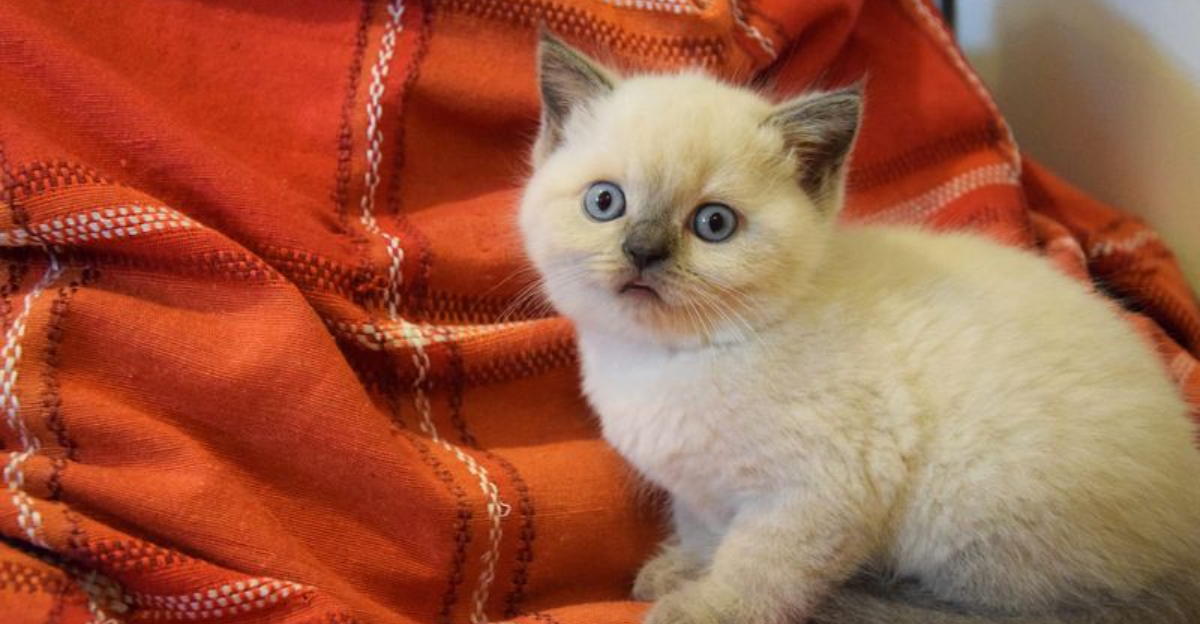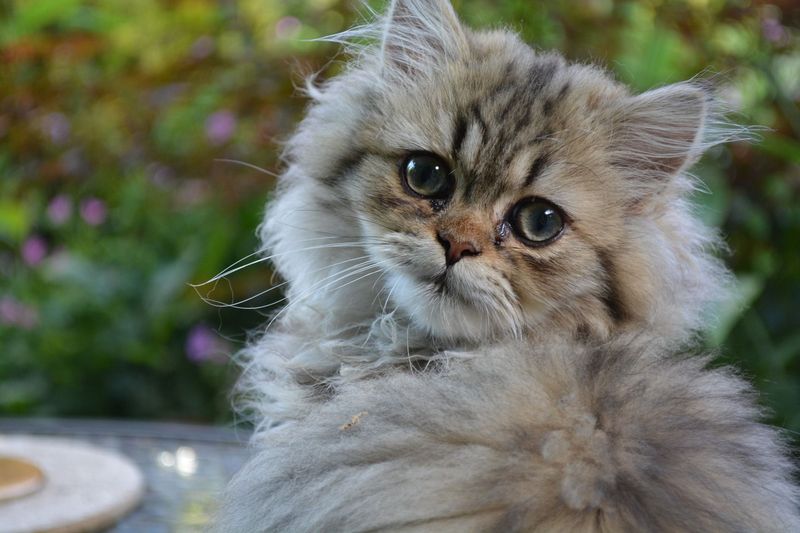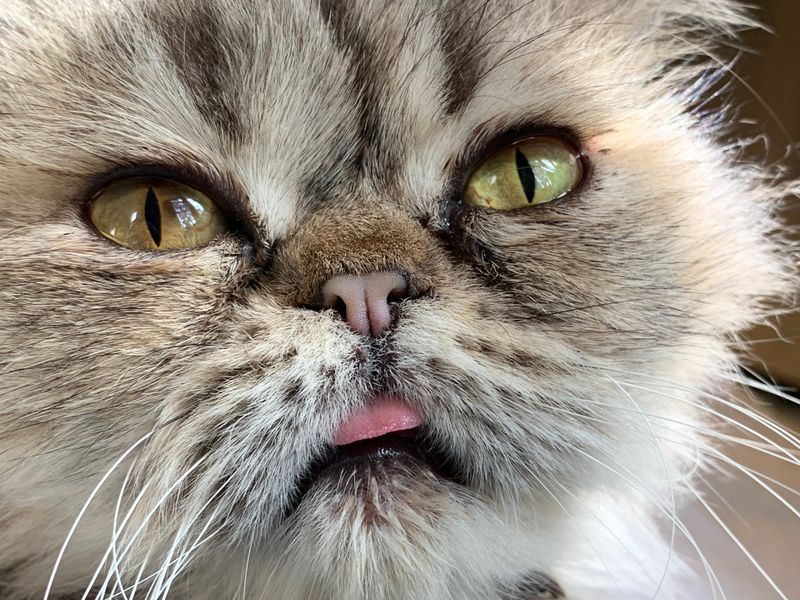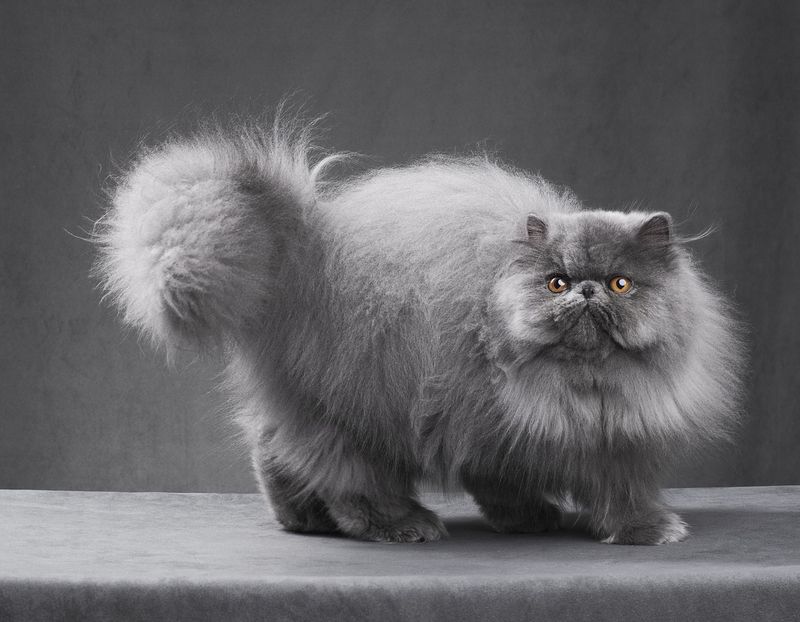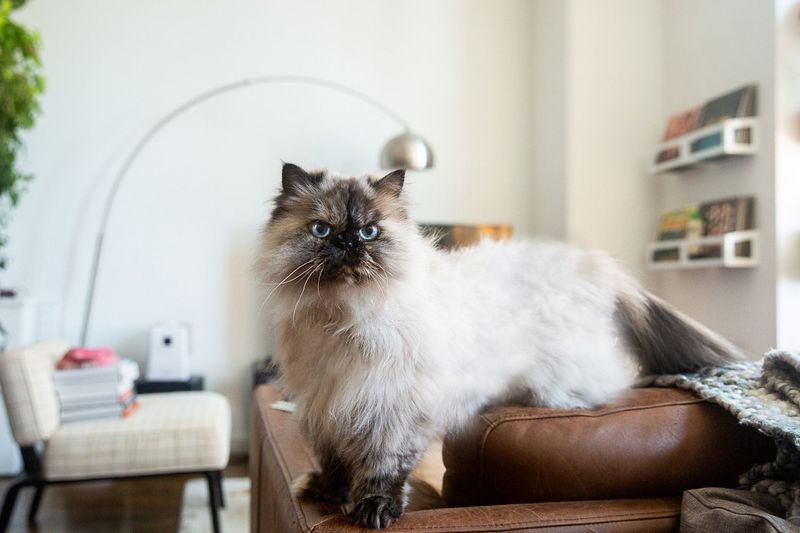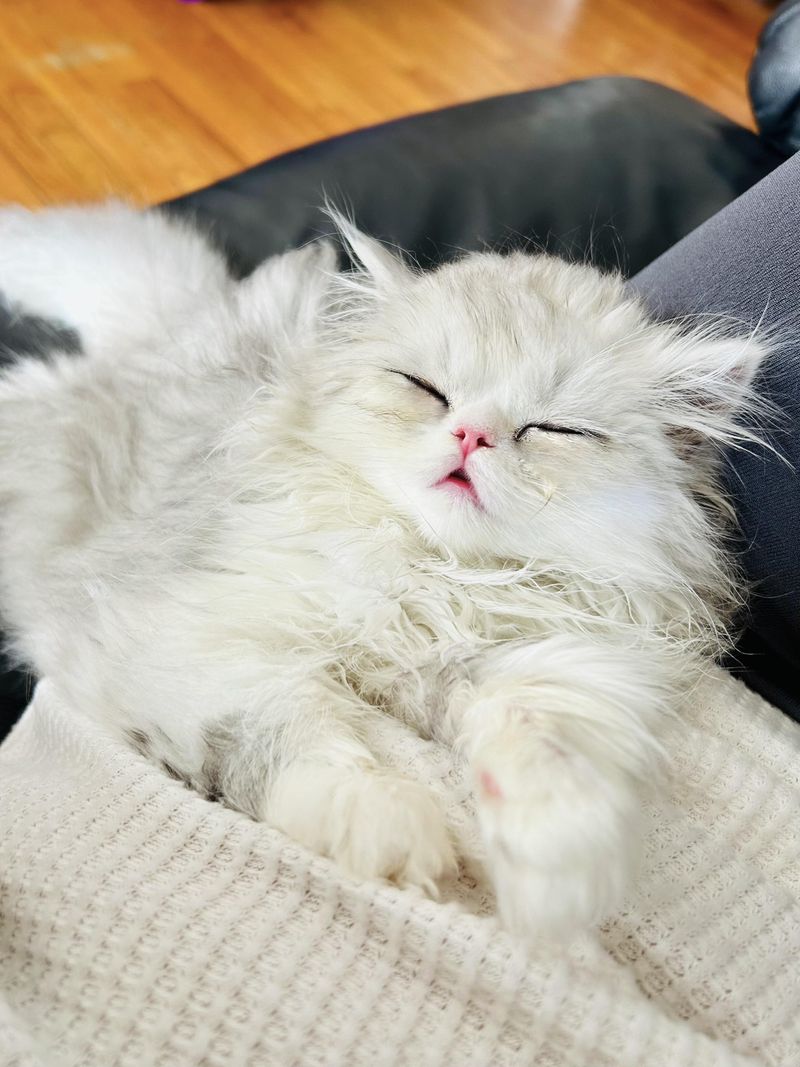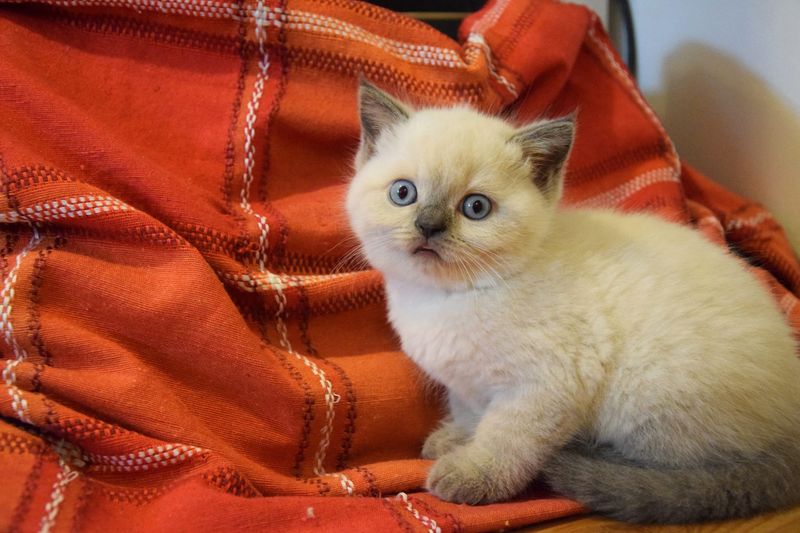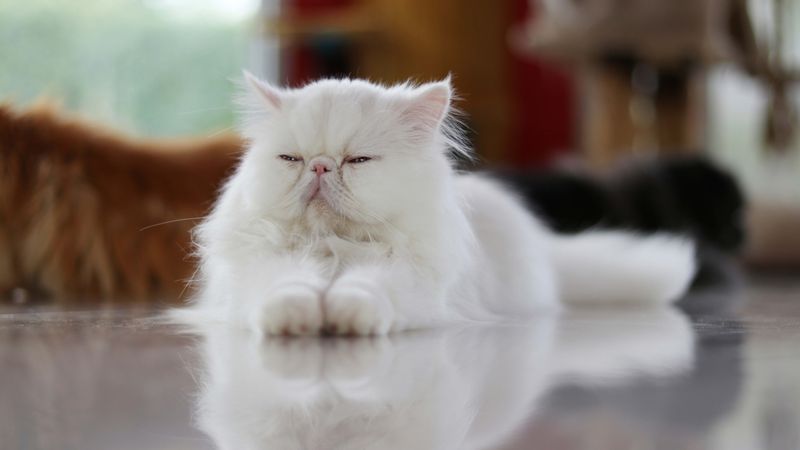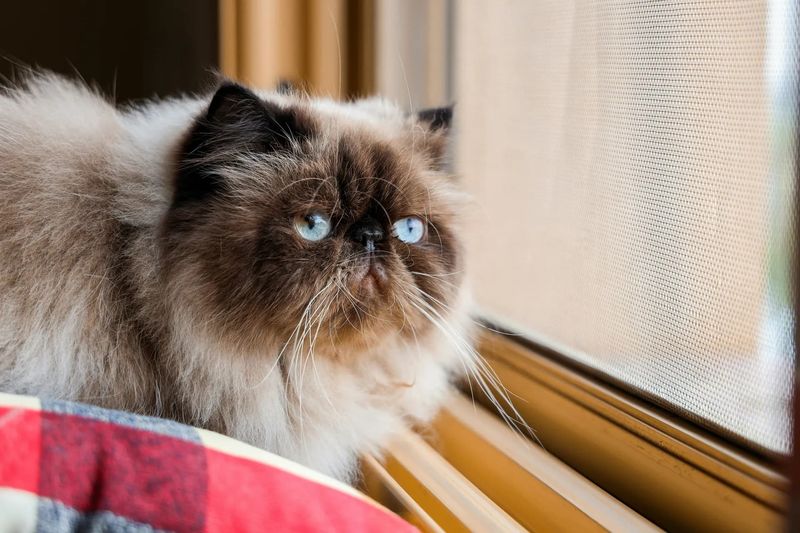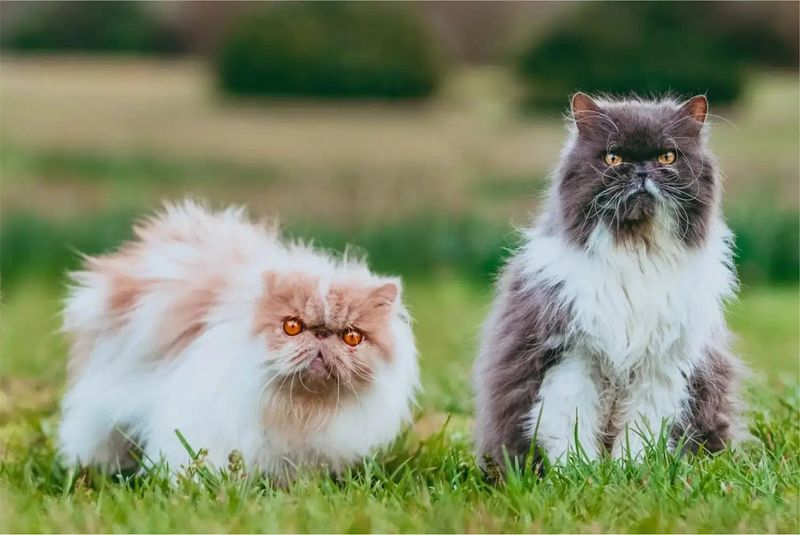📖 Table of Content:
Deciding between a Persian and a Himalayan cat requires an understanding of the subtle yet significant differences between these two breeds. While both share striking beauty and affectionate temperaments, their distinct characteristics cater to different types of cat lovers. From coat patterns to personality traits, each breed offers a unique companionship experience that suits various lifestyles.
Persian cats are known for their luxurious, thick coats and calm, laid-back personalities, making them ideal for quiet homes. On the other hand, Himalayans inherit a bit of their Siamese ancestry, giving them a more playful and social nature. These differences extend beyond temperament, influencing factors like grooming needs, activity levels, and vocalization habits. Knowing these distinctions can help prospective pet owners choose the best fit for their household.
Whether you’re looking for a serene lap cat or a lively, interactive companion, understanding these nuances will make your decision easier. By the end, you’ll have a clearer idea of which feline friend aligns best with your home and lifestyle.
1. Breed Origin
The Persian cat is an ancient breed that originated in Persia (modern-day Iran) and has been cherished for centuries. It was introduced to Europe in the 1600s and quickly became a favorite among aristocrats. On the other hand, the Himalayan cat is a much newer breed, developed in the 1930s by crossbreeding Persians with Siamese cats. This intentional breeding aimed to create a cat with Persian-like features but with the distinctive color points of a Siamese. While the Persian has a long-established history, the Himalayan was only officially recognized as a breed several decades later.
2. Coat Color
Variations in coat color are a major distinguishing factor between these two breeds. The Persian cat comes in an extensive range of solid, bi-color, and patterned coats, including black, white, blue, red, and even tortoiseshell. Unlike Persians, Himalayans always have a pointed coat pattern, meaning their body is a lighter shade while their ears, face, paws, and tail are darker. This feature is inherited from their Siamese ancestry and comes in various point colors such as seal, blue, chocolate, and lilac. If a cat has a solid-colored body without distinct points, it is undoubtedly a Persian rather than a Himalayan.
3. Eye Color
Differences in eye color provide another clue to tell these breeds apart. Persian cats can have a variety of eye colors, including blue, green, copper, or even odd-colored eyes, depending on their coat. However, Himalayan cats always have deep blue eyes, a trait inherited from their Siamese lineage. In addition to color, eye shape is a subtle distinguishing feature—both breeds have large, round eyes, but Himalayan eyes often appear slightly more intense due to their contrast with darker facial markings. The consistent blue-eyed look of Himalayans makes them easy to differentiate from certain Persian varieties.
4. Facial Structure
Structural differences in the face set these two breeds apart. Persian cats come in two distinct face types: the traditional (doll-faced) Persian, which has a more natural, slightly elongated facial shape, and the Peke-faced Persian, which has a round, flat face. In contrast, Himalayan cats usually resemble the Peke-faced Persian, with a broad skull and a flatter overall facial appearance. This similarity is a result of their Persian lineage, but Himalayans sometimes have a slightly less exaggerated roundness in their face compared to the flattest Persian varieties. If a cat has a prominently rounded face with chubby cheeks, it is likely a Persian or a Himalayan.
5. Nose Shape
Nasal structure plays an important role in distinguishing between these breeds. Persian cats, particularly the Peke-faced variety, have a very short, upturned nose that can cause breathing difficulties. Traditional Persians, however, have a slightly longer nose, giving them a more natural profile. Himalayans typically inherit the Peke-faced Persian’s nose, but some may have a slightly more pronounced bridge, making their breathing a bit easier. Despite these minor variations, both breeds tend to have snub noses compared to other cat breeds. If a cat has a noticeably flat nose with minimal bridge definition, it is most likely a Persian or a Himalayan.
6. Body Type
Physical build is another key factor in telling these breeds apart. Persian cats have a stocky, broad-chested body with short, sturdy legs that give them a compact, plush appearance. Himalayans share a similar structure but can appear slightly more elongated, thanks to their Siamese heritage. Despite this, both breeds are medium to large in size, weighing between 7 to 12 pounds on average. Their short legs prevent them from being agile climbers, making them more suited to lounging rather than leaping around. A Persian will always have a dense, muscular frame, whereas a Himalayan might look a little more refined.
7. Tail Length & Shape
Tails can be another subtle way to tell the two breeds apart. Persian cats have short, thick, and fluffy tails that match their overall round and compact body. In contrast, Himalayans often have a tail that appears slightly longer and more slender, influenced by their Siamese lineage. While both breeds have luxurious, plumed tails, the Himalayan’s tail is often held with more grace and elegance. Despite these slight differences, their tails still require regular grooming to prevent matting and tangles. If a cat’s tail appears noticeably long and flowing, there’s a good chance it could be a Himalayan.
8. Fur Texture
The texture of a cat’s fur is another characteristic that sets these two breeds apart. Persian cats have an extremely thick, plush coat with a dense undercoat that gives them their signature voluminous appearance. Their fur is often heavier, making them appear more fluffy and luxurious. Himalayans also have long hair, but their coat tends to be finer and silkier due to their Siamese ancestry. While both breeds have equally stunning coats, a Persian’s fur will always feel denser and more voluminous, while a Himalayan’s will be softer and smoother to the touch.
9. Grooming Needs
Maintenance requirements are an important factor for potential owners to consider. Persian cats require extensive grooming due to their dense, thick coats that are prone to matting and tangling. Daily brushing is essential to prevent knots and keep their fur smooth and healthy. Himalayans, while still requiring regular grooming, tend to have slightly easier-to-manage coats due to their silkier texture. However, both breeds benefit from routine brushing, as neglecting their coats can lead to discomfort and skin issues. If a cat has a particularly thick and voluminous coat, it is most likely a Persian, whereas a slightly lower-maintenance coat may indicate a Himalayan.
10. Personality & Temperament
Personality traits can help distinguish these breeds beyond their appearance. Persian cats are known for their calm, affectionate, and easygoing nature, preferring to lounge in peaceful environments. Himalayans, while still loving and gentle, tend to have a livelier side due to their Siamese genetics. They may be more playful, curious, and interactive compared to their Persian relatives. Despite these differences, both breeds are highly affectionate and enjoy spending time with their owners. If a cat seems particularly active and enjoys engaging in games, it is more likely to be a Himalayan.
11. Energy Levels
Energy levels vary significantly between these two breeds. Persian cats are notably low-energy and prefer relaxation over vigorous play. They are content sitting in laps, lounging on furniture, and observing their surroundings. In contrast, Himalayans have a more moderate activity level, often engaging in playful behavior while still enjoying relaxation. Their Siamese ancestry gives them a slightly higher energy drive, making them more likely to chase toys and explore their environment. If a cat shows bursts of playful energy but still enjoys lounging, it is likely a Himalayan rather than a Persian.
12. Vocalization
Sounds and communication styles also differ between the two breeds. Persian cats are known for their soft, sweet, and infrequent meows, rarely making noise unless they need something. On the other hand, Himalayans are much more vocal due to their Siamese lineage and often express themselves with gentle yet persistent meows. They enjoy “talking” to their owners and are more likely to respond to conversations. If a cat frequently vocalizes, especially with a distinct tone, it is more likely a Himalayan. A quiet and reserved cat, however, is most likely a Persian.
13. Intelligence & Trainability
Learning ability varies between these two breeds. Persian cats are intelligent but prefer routine and are not highly motivated to learn tricks or commands. Himalayans, influenced by their Siamese side, tend to be more trainable and can even learn simple tricks like fetch or responding to their name. They enjoy interactive toys and puzzles more than Persians, who prefer calm environments. While neither breed is hyper-intelligent like some working breeds, Himalayans show more curiosity and problem-solving abilities. If a cat seems eager to engage in training exercises, it is likely a Himalayan.
14. Sociability
Persian cats are affectionate yet independent, enjoying the quiet company of their human companions. They thrive in tranquil environments where they can relax undisturbed. In contrast, Himalayan cats are more social and playful, thriving on attention and interaction from their owners. This lively sociability can be a delightful feature for those who seek an engaging pet that actively participates in household activities. These sociability differences provide potential cat owners with choices that align with their lifestyle preferences, whether they yearn for a serene companion or an active participant in daily life.
15. Health Concerns
Health risks are similar between these two breeds. Persian cats are prone to breathing problems, kidney disease, and eye conditions due to their facial structure. Himalayans, sharing the same genes, also face similar health risks but may have slightly fewer breathing issues. Regular vet check-ups, a healthy diet, and proper grooming can help manage these conditions. Since both breeds are brachycephalic (flat-faced), they may experience difficulty breathing in hot or humid weather. A Persian or Himalayan cat owner must be aware of these potential health issues and take preventive care.
